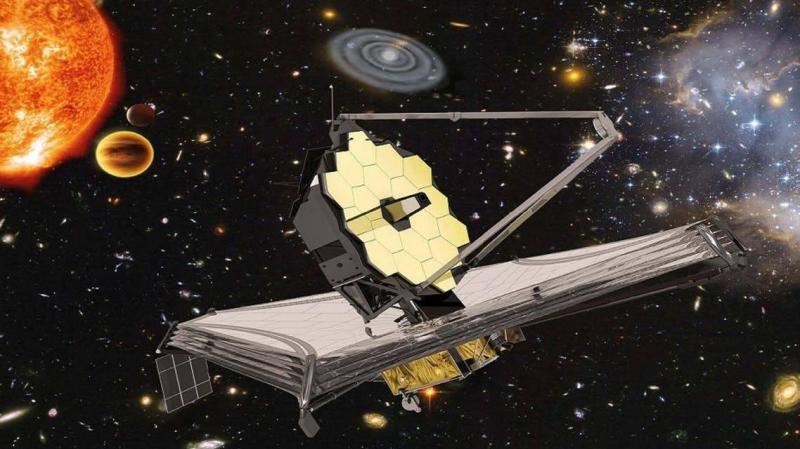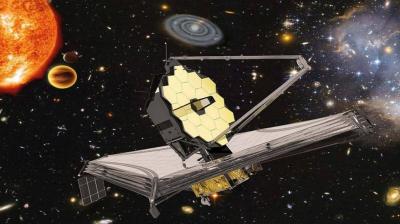The greatest gift that astronomy offers humanity this Christmas and New Year, just two months away, may be as significant as humanity's landing on the moon in 1969. This is because of the James Webb Space Telescope, set to launch on December 18, to succeed the famous Hubble Telescope. If everything goes according to plan, three space agencies that have spent $10 billion and 25 years manufacturing and assembling it will allow humans to see what no human eye has seen before, except perhaps in dreams or films.
Named after James Edwin Webb, who served as the second administrator of NASA from 1961 to 1968 and passed away in 1996 at the age of 86, this telescope will be launched into space by an Ariane 5 rocket from a space launch center in Kourou, French Guiana, near the Brazilian border. It will observe the universe from a height of 1.5 million kilometers above Earth for a duration of 10 years, as part of a project between NASA, the European Space Agency (ESA), and the Canadian Space Agency (CSA).
From this unique height, where no human-made device has been stationed before, JWST will take us "back in cosmic history more than ever before," according to NASA Administrator Bill Nelson in a statement last month, who described the telescope as a "tremendous achievement that will change our view of the universe and provide us with astonishing information about it, as it will peer back in time over more than 13 billion years to where light shone just after the Big Bang, bringing us very close to solving many of the mysteries of this great universe."
The telescope is also described as a "completely new and different beast," according to Marcia Rieke, a professor of astronomy at the Steward Observatory at the University of Arizona. She stated that Web, as it is also abbreviated, will revolutionize our understanding of the universe, discovering galaxies that are closer in time to the Big Bang compared to Hubble, which is retiring next year after 32 years of service at an altitude of 550 kilometers. Moreover, it will surpass Spitzer, another NASA launch from 17 years ago, with a detection sensitivity that is 100 times greater than Hubble.
The Webb telescope observes the universe through near and mid-infrared rays, with wavelengths longer than visible light, enabling it to look back in time between 100 to 250 million years after the so-called Big Bang. This timeframe is significant as it is very short relative to the universe's age of over 13.7 billion years, during which the first stars, galaxies, and nebulae appeared and formed the structure of the universe that continues to expand to this day.
### Latest Cameras and Spectroscopy Devices
In the video below, more information is provided about Webb, which began construction in 1996 and had its components assembled over an eight-year period at a NASA facility in Maryland. According to what "Al-Arabiya.net" read about its history, the telescope measures 4.5 meters in width and 10.5 meters in height when folded. It is also equipped with the latest cameras and spectroscopy devices, utilizing advanced technologies to ensure excellent observational capabilities.
However, the most important aspect of the telescope, which will begin transmitting images of its observations in March, is the astronomical mirror, described as the largest ever, with a diameter of 6.5 meters. It is protected by a five-layer shield that maintains the cooling of its mirrors and instruments, preventing infrared rays from Earth, the moon, and the sun from reaching the largest and most powerful telescope in space to date. It even has the capability to detect signs of life on exoplanets in other galaxies in less than 60 hours.




